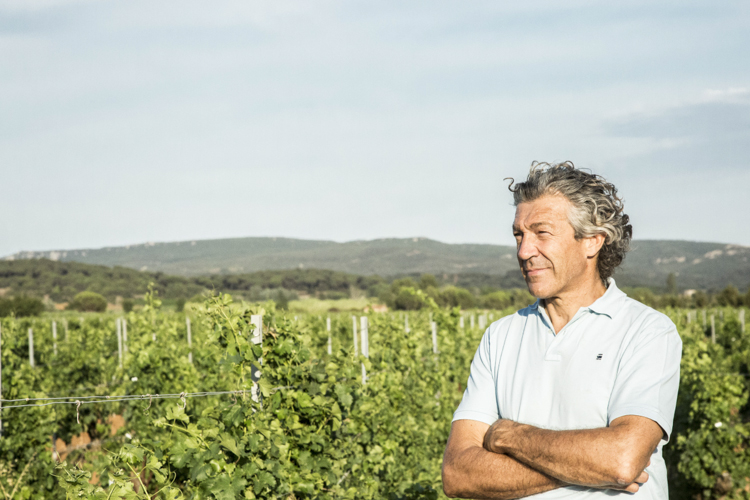
INTRODUCTION
Many people during my tour of Gérard Bertand’s Languedoc wine estates asked me which of the domaines were my favourites, which of his spectacular cellars impressed me the most. Successful winemakers across the world are known for building dramatic cellars – the wine cathedral of Alvaro Palacios in Priorat, the eco-cellar of Angelo Gaja in Barbaresco – and a work of art like Bertrand’s Clos du Temple, certainly ranks alongside these. But for me there is one clear element that stands out regarding the transformation of the Languedoc’s wine scene brought about by Gérard Bertrand. And that is quite simply the revolution of converting almost one thousand hectares of vines to both certified organic cultivation, certified biodynamic winemaking and an active promotion of biodiversity.
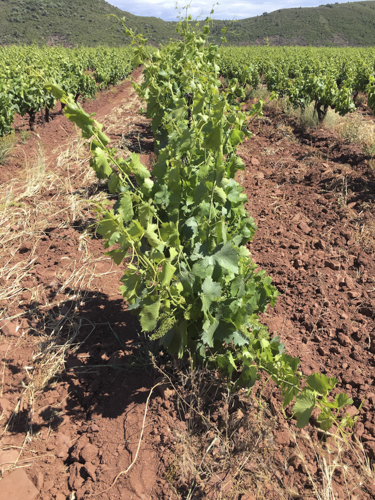
And all this over 16 different estates that span the vast geographical landscape of the South of France’s Languedoc region, encompassing vastly different soils and climates, where very single vine is harvested by hand. In travels to vineyards across the world I cannot remember the number of times a winemaker with an estate of over 20 hectares saying to me with a philosophic shrug of the shoulder, “well organic and biodynamic are all very well for small domaines but it is just not possible to implement on a large winery, either practically or economically – or, yes I am a great fan of organic but just look at the climate in my region, becoming certified is simply not feasible with the rainfall we have, imagine how many treatments I would be making each year.” But after achieving the goal in 2020, of finally certifying all his 880 hectares of vineyards, a project that has taken 20 years of commitment, this will serve as an example to vignerons everywhere. And the result is clearly there in the quality, the perfection, of his boldly-named ‘Grand Vin’ wines, which today reach a global audience across some 171 countries. This Trail offers a taste of seven key domaines where there is always an unshakeable respect for nature. Take a journey of discovery from maritime to mountainous terroirs, through the the iconic Languedoc appellations of Corbières and La Clape, past Minervois and Limoux across to the wild volcanic landscapes of the Terrasses du Larzac.
Hospitalet is the ultimate symbol of the world of Gérard Bertrand. Purchased in 2002 this property dominates La Clape Appellation, extending over an immense 1,000 hectares, from mountainous limestone hills to the Mediterranean, whose maritime winds give wines here a characteristic salinity.
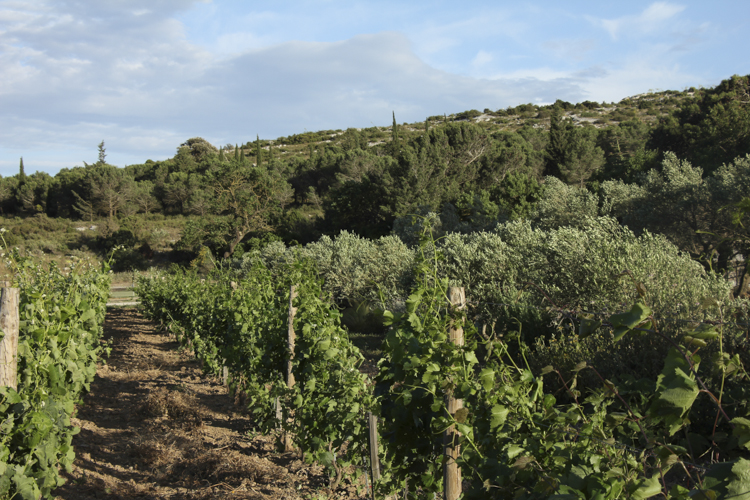
His 100 hectares of small parcels of vines are surrounded by a powerful biodiversity; the Languedoc’s fragrant ‘garrigue’ scrubland of thyme, rosemary, sage, lavender, fennel, yellow ginestra, daisies and violets. And oenologist Guillaume Barraud explains that the estate was primarily planted with international grapes when Bertrand bought it. He immediately decided to make a signature wine for the Massif de la Clape highlighting the local Bourboulenc grape. Narbonne rightly describes itself as the birthplace of French vineyards as its importance as a port meant that the first vines planted in France arrived here. Not just from Greece and Rome but in Bourboulenc’s case maybe from Persia and Mesapotamia. The cellar lies beneath the château, blasted out of the stone by dynamite and features an ageing room of some 3,000 French oak barrels. That is certainly the trademark feature of Bertrand’s wines, but there is also surprising experimentation; terracotta amphorae, glass wine globes concrete tanks and ovoids. “The amphorae are perfect for our latest adventure, an orange wine that we hope will be the first to be included in an official Appellation.”
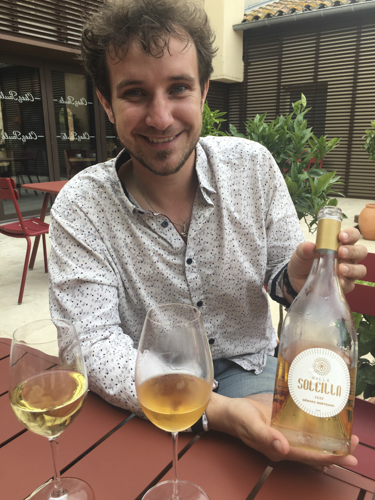
Having tasted many orange wines, the Villa Soleilla is certainly surprising. With a short maceration period of just 2-3 weeks, it has a pale orange colour and is a wonderfully elegant yet fresh blend of Roussanne, Grenache Blanc and Vermentino. But L’Hospitalet is a lot more than a vignoble.
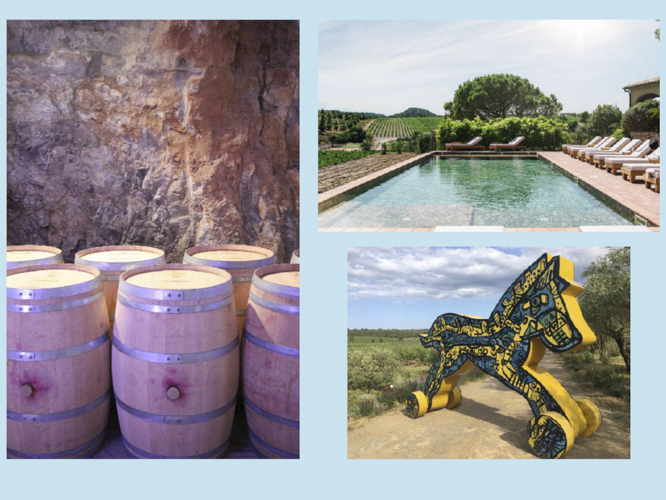
The Château has been transformed into a pioneering wine resort, offering tasteful accommodation, gourmet restaurant, spa, beach club and outdoor activities from golf to biking and hiking. And the Château draws huge crowds each year for its international jazz festival and major art exhibitions.
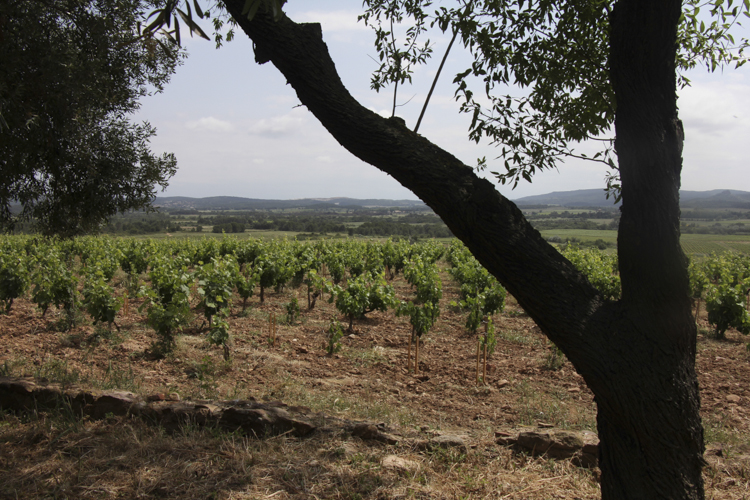
Located in the heart of the rugged Corbières region, just outside the village of Boutenac which gives its name to the Appellation’s prestigious Cru, Château de Villemajou was the original Bertrand family vineyard, where Gérard experienced his first harvests, working alongside his father Georges, a pioneering independent vigneron. Since he took over after the sudden death of his father in 1987, the estate has grown to a vast 200 hectares, stretching for some 14 kilometres around the château. Christophe Sournier, oversees the cultivation of the vines, and walking through the vineyard, explains how, “we are in the heart of the Massif des Corbières, influenced both by mountains and the sea, with strong winds that provide a natural protection agains diseases like mildew.
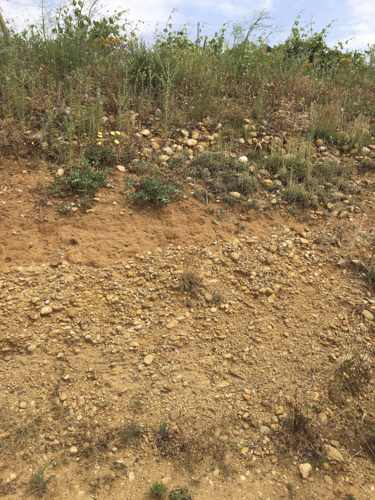
And the other crucial element is our soil, what we call ‘galets roulés’, round pebbles that are lying above first a layer of limestone clay and then a layer of molasses that looks like soft sandstone and shale, but is actually as hard as cement – you can see a cross-section right here below a vine. This mineral soil is very poor for agriculture but perfect for a vineyard because the vines push their roots to find water when the top soil becomes too arid.” The white wine blend uses classic Corbières varieties of Grenache Blanc, Roussanne and Marsanne, while the four different reds are made from Carignan, Grenache, Mourvèdre and Syrah. Many of the estate’s vines are old, some over a century, often the distinctive free-standing ‘gobelets’ bush vines, a symbol of the Corbières.
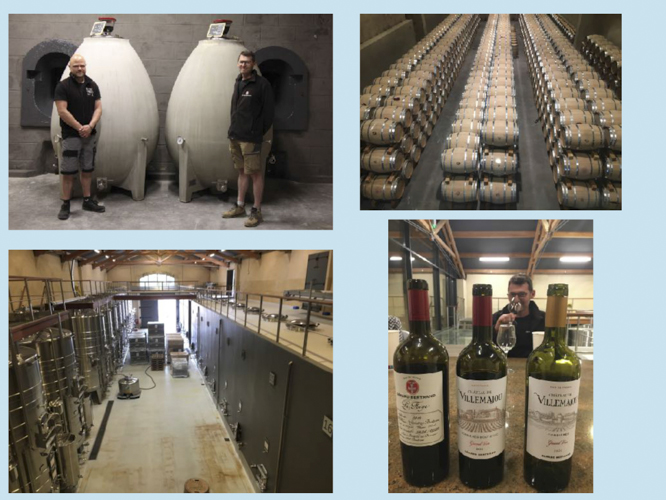
While Christophe is a locally born and bred vigneron, the cellar master, Arnaud Saulnier, comes from the north of France andchanged his life to retrain as an oenologist, bringing a different kind of passion to the wine. So while oak barrels may dominate cellar, there are also experiments using both raw and vetrified cement tanks for maceration and vinification of the red grapes, as well as cement ovoids to age the top level La Forge cuvée.
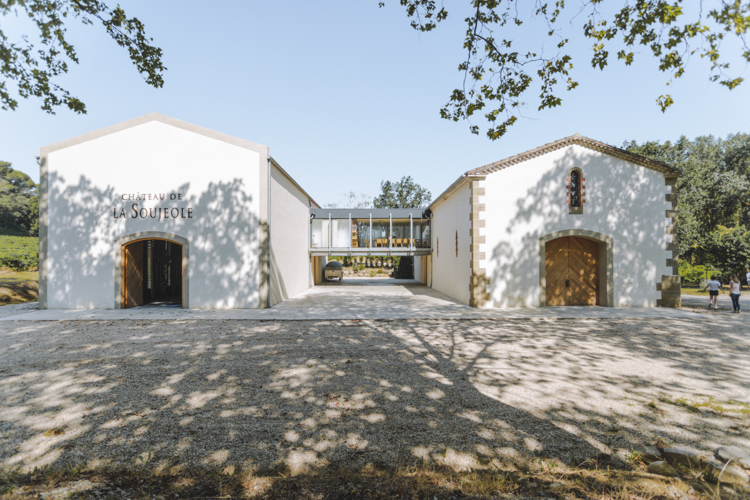
Although La Soujeole’s modern oak barrel and steel tank cellar dates back to 2015 when Gérard Bertrand took over the domaine, there is a long history of wine being made here since 1740 by nine generations of the same family. The last descendent, Monseigneur Bertrand de Soujeole is rector of the nearby Basilica of Carcassonne, and still lives in the château. Soujeole is located in Malepère, a tiny Appelation dating back only to 2007, producing only red and rosé wines in contrast to the whites of its more well known neighbour, Limoux. Planted with only Merlot and Cabernet Franc, the estate produces just a single blend of the two grapes which Christophe Medinilla, who oversees the vines and cellar here, describes as, “ a wine that is the embodiment of the Languedoc – intense, fruity, full-bodied, perfect with a traditional cassoulet or a rich wild boar stew.”
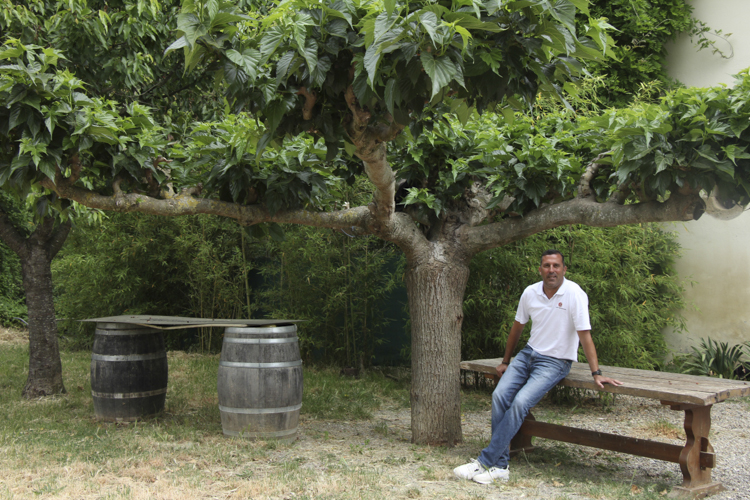
Christophe is of Andalousian descent, and before coming here worked in the Roussillon, where, “it was already obvious long ago that everyone should be working in organic cultivation, and I think you can say that before coming to La Soujeole, I practiced my own personal biodynamics, whereas here we all follow Demeter rules and regulations. Our domaine is a good example to demonstrate how each of Gérard’s estates practice their own particular biodynamics to reply to their specific needs.
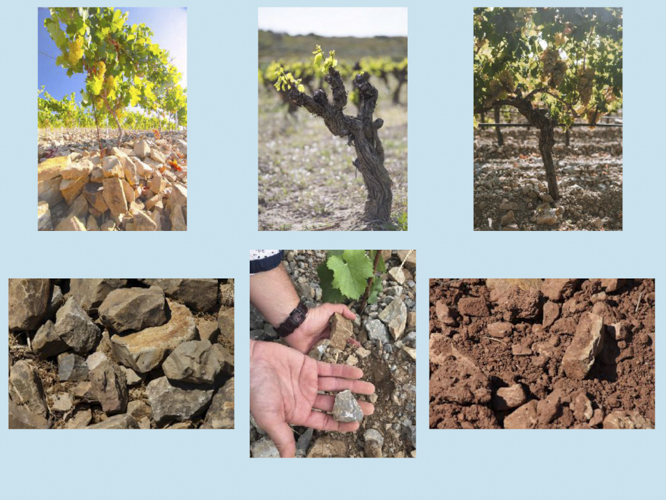
Over in La Clape they benefit from strong winds so do not need to treat against mildew, but here we have more rain and less wind, so we always need to be ready to react to the danger of mildew striking. Each parcel of our vineyard is vinified separately to keep the different expressions of soil and exposure. Then the key moment comes during the blending, where Gérard is always present and decisive, because at the end of the day it is he who decides what kind of wine he wants – ‘c’est lui qui crache le vin’ as we say around here.”
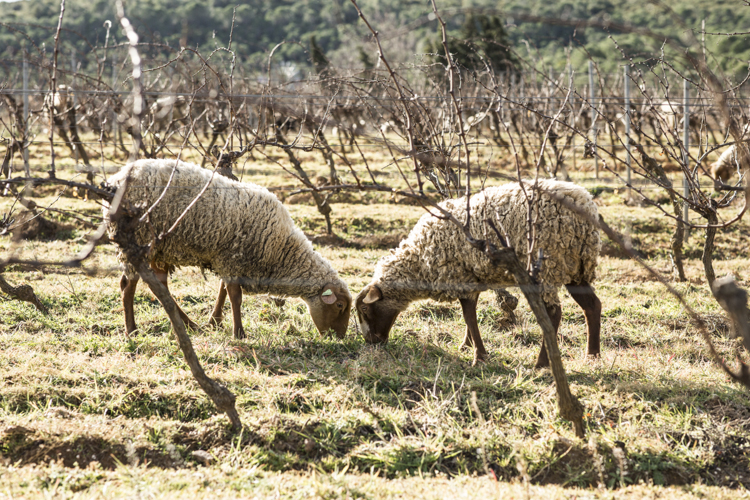
After climbing high above the picturesque village of Cabrières, the road enters what looks like a lost forested valley of oaks and pines, eventually coming out at the futuristic cellar of Clos du Temple, overseen by Benjamin Gaddis, a bubbly, enthusiastic winemaker, originally from Toulouse. This tiny 12 hectare vineyard has been cultivated at least since 1177 by the Order of the Knights Templar, crusaders who were known for choosing land on a high level, with good water supplies and filled with energy, almost like Chinese Feng Shui. And that is just the start of the ethereal vibrations here. The first decision was to make a single wine on the estate, a rosé blended from Cinsault, Grenache Noir, Syrah, Mourvèdre and Viognier. The cultivation was organic and biodynamic from the first day, dividing the vineyard up into 11 parcels of vines, mostly at least 40 years old with some upto 80 years, all vinified separately.
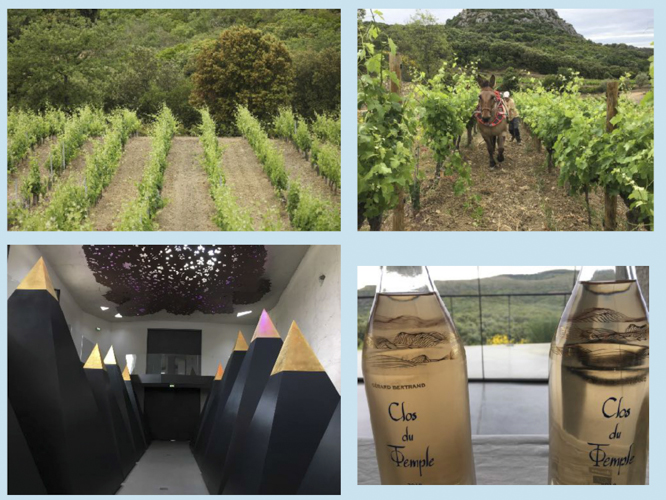
Since 2018 the soil is worked using a mule, the rather noble BanzaÏ du Roc, with his muleteer, Jérome Diette, choosing to work behind the animal walking with a hand plough. “For us this is more than just a symbol but concretely reflects the fundamental concept of our biodynamics – connecting man, animal and the soil. Banzaï ploughs and lays biodynamic treatments across the whole estate, and we just use a tractor for copper treatments which would not be very healthy for the mule.” Benjamin then explains that “to complement the work in the vineyard, a whole new cellar concept has been created for this wine. Inspired by the world’s pioneer winemakers over 6,000 years ago, the cellar pays homage to the ancient Egyptians, with 11 pointed stainless steel tronconic vats, one for each parcel, encompassed by dramatic bauxite pyramids. For us this is a continuation of the harmony that begins in the vineyard, and the pyramid brings a unique energy to the wine.
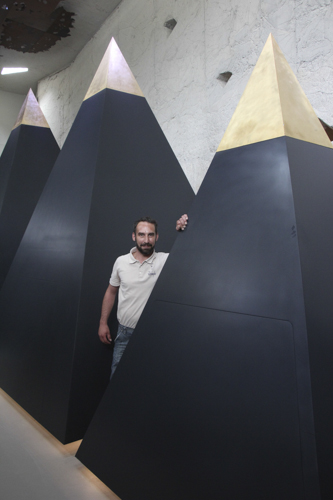
The fermentation begins in these inox tanks, then the wine is aged in oak barriques before being returned to the pyramid to await the crucial blending. The result is a wine that has the taste of the terroir – mineral, flinty, fresh, saline and high acidity, each year an exceptional, highly individual vintage that has already garnered an award as the World’s Best Rosé.”
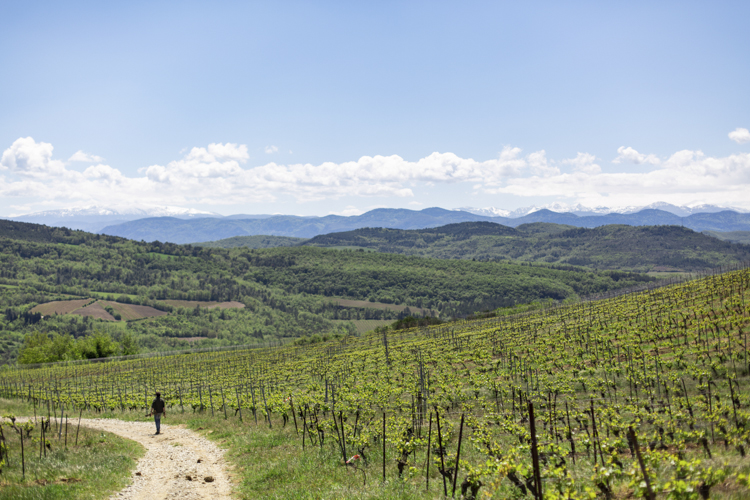
Even the most modern GPS has problems locating the hidden Domaine de l’Aigle once the winding, narrow lane disappears into the rolling hills and valleys that surround the historical winemaking town of Limoux. While the Aigle’s cellar sits beneath the pretty village of Roquetaillade-et-Conilhac and its medieval fortress castle, the estate itself ranges over 53 hectares, rising up to the signature Cabane de l’Aigle plot that sits at 500 metres. It is the first of many surprises that await wine enthusiasts that arrive for a tasting with Thibault Haentjens, a pensive, discrete oenologist who has been running the domaine the last 11 years. Don’t expect to find vines growing Chenin or Maziac, the emblematic grapes used in the region’s celebrated bubbly Blanquette de Limoux. Instead there are essentially Pinot Noir and Chardonnay, with the reputation of Domaine de l’Aigle resting squarely on these still wines. And they are most impressive.
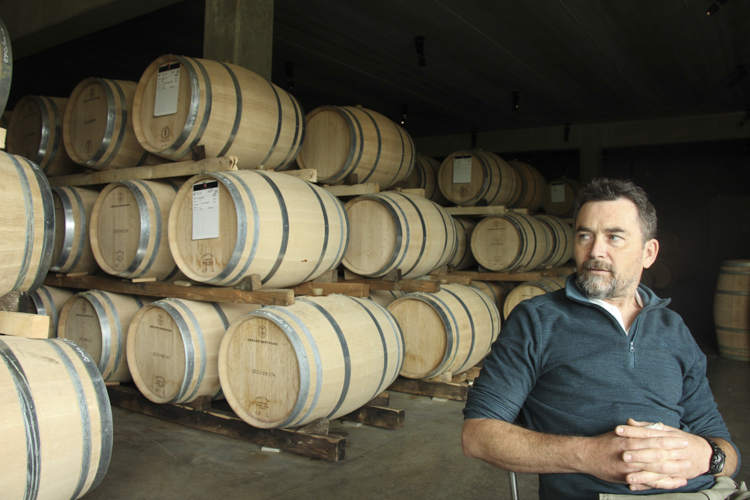
This traditional chai is all about ageing in small oak barrels, around one thousand of them in total, and the passion of Thibault is to conduct a tasting direct from the wood using a pipette, which is a stunning exhibition of the extreme variety that each parcel brings to the blend, be it for Chardonnay or Pinot Noir. Thibaut explains that, “although we produce single grape wines rather than the blends that are so much Gérard’s trademark, what I say as I take people round on a barrel tasting is that we have so many varied parcels that the wine is still an assemblage.” That is certainly true when I try a selection of Pinot Noir barrels – some light, almost Gamayish; intense younger wines; supple, elegant older vines with more tannin like a Burgundy; Mediterranean style parcels intense in alcohol. “Ours are simply not typical Languedoc wines,” explains Thibault. “Just look around here from the Cabane – a 360° arena, one side the Mediterranean, the other the Atlantic, the Languedoc climate but the snow-capped peaks of the Pyrénées, different soils, different biodiversity, cultivated fields, other filled with sheep grazing. And hot days contrasting with cool nights, ensure wonderful freshness for the wine.”
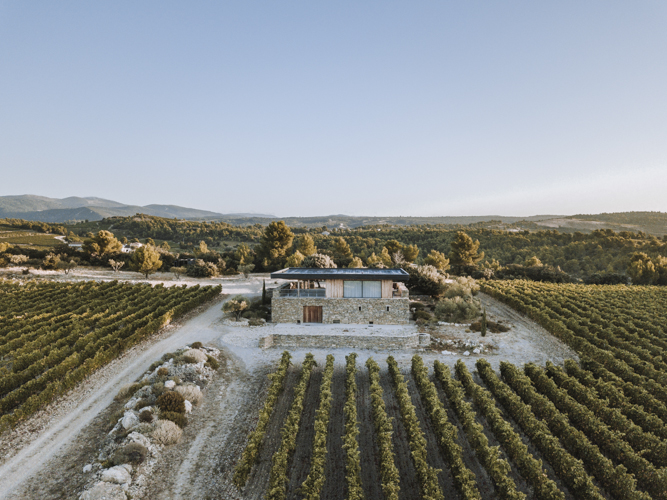
Arriving at the beautiful village of Laville, a tiny side road heads off towards Clos d’Ora, a twisting and turning journey of around 3 kilometres that eventually becomes a rough track lined by ancient stone walls through which a small car barely passes. Then you suddenly come out at the foot of the vineyard in a landscape marked by wild flowers and herbs, olive trees and ancient oaks. Tucked away in the small Minervois La Linière Appellation, this was the second domaine that Gérard Bertrand purchased back in 1997, the only vigneron to imagine the immense potential of this terroir. It is difficult today to imagine what the landscape must have looked like then – rough scrubland, woods, barely an hectare of vines. He cut everything own, pulled up the vines and planted 8 parcels to create a 9 hectare single vineyard.
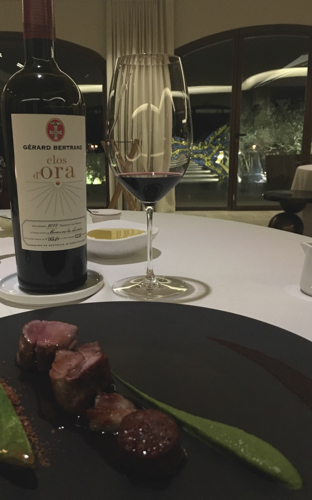
This genuine clos produces a single wine, an exceptional red blend of Syrah, Grenache, Carignan and Mourvèdre.
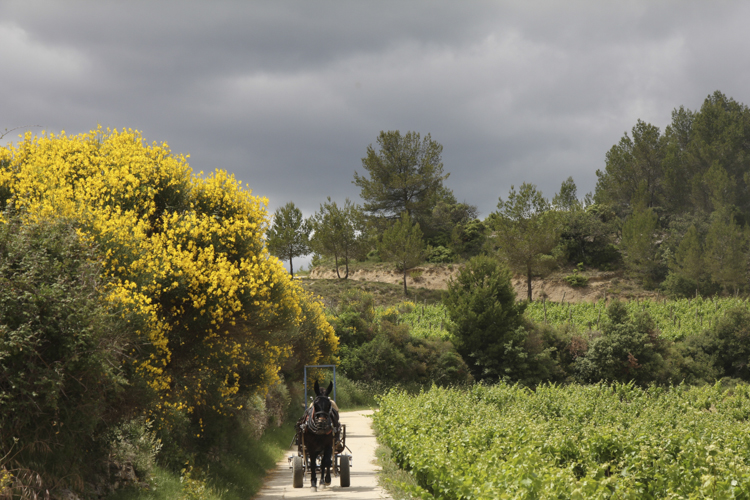
It is no understatement to say that the domaine is personified by two irrepressible personalities, who carry out almost 90% of the work on the soil; Vanina the mule and Nicolas Fabrié , her muleteer, who enthuses how, “I have worked here with Vanina for 10 years now, since the start of the Clos d’Ora project. For me it is the perfect job. I love working with horses and mules, I love working the soil, preserving the vineyard’s biodiversity every day. What else could anyone ask for.” The young winemaker, Bastien Dutour, has only been here a year, and opening bottles for an exceptional vertical tasting going back to the first vintage in 2012, and he is clearly still under the spell of Clos d’Ora’s zen cellar, designed following biodynamic principles, and a surprising mix of not just barrels and steel vats but cement tanks and futuristic ovoids.
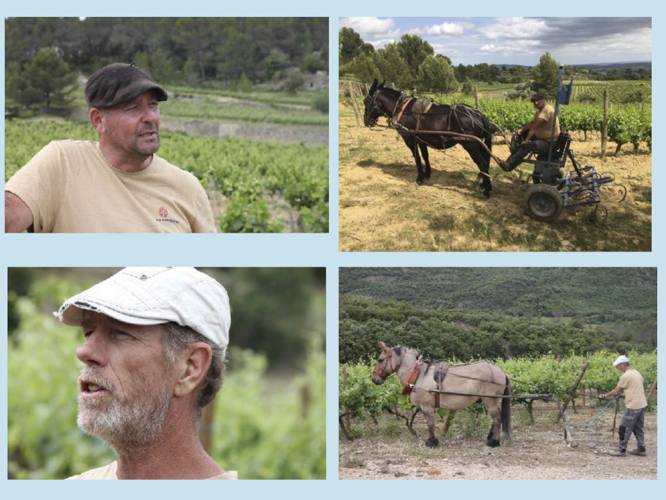
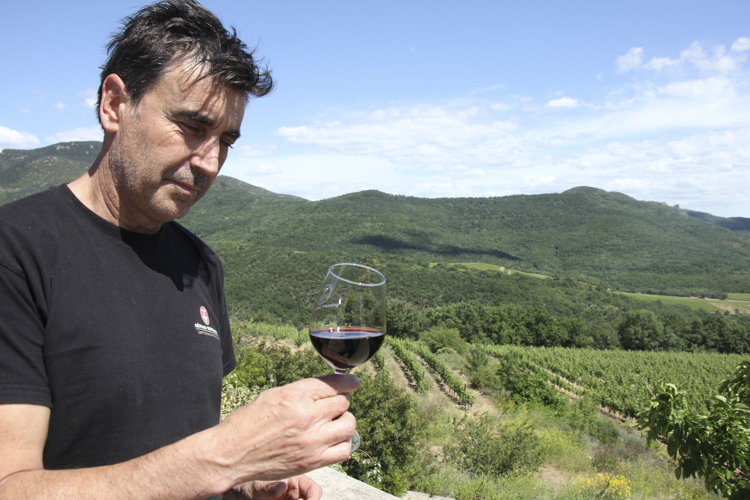
Located in the heart of the lunar landscapes of the Terrasses du Larzac Appellation, this wild volcanic country is a very different face of the Languedoc, and the winemaker running the estate, Antonio Cortes, is a passionate, down-to-earth vigneron who began working at the Sauvageonne back in 1992, when the then owner, a rather eccentric Englishman, “really did not know anything about making wines.” The sprawling 75 hectare vineyard is split up into 70 parcels, some up to 6-7 kilometres apart, with two very distinctive volcanic soils; Permen Gris and Ruffe. You really need to get out of the cellar and into the vineyard to understand the very distinctive wines made here.
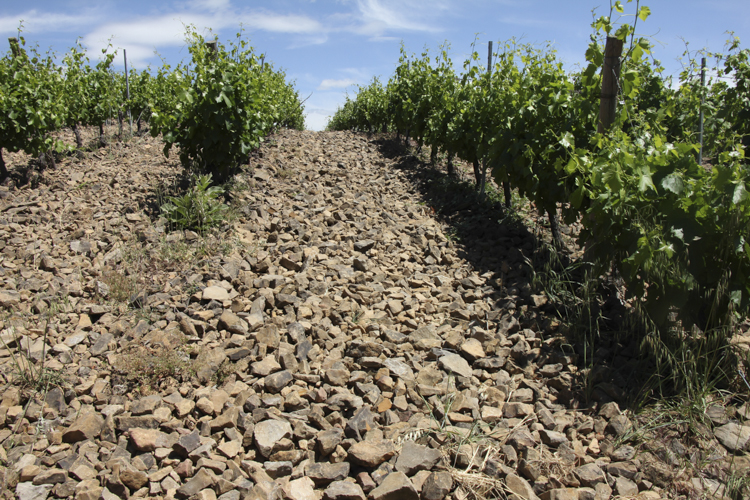
Antonio explains that, “the big schist stones of Permen Gris date back over 250 million years. People think the vineyard looks like a rock garden, as if we placed the stones around the vines as decor. But the opposite is true as the stones were here first and we planted the vines in them. This makes it very hard to walk through the vineyard, to do treatments or during harvest, as you can easily slip and twist an ankle. At these high altitudes, it is perfect for our Grenache Blanc and Roussanne white grapes. You then enter the very different world of Ruffe red clay soil that creates a distinctive landscape of canyons that could be in Colorado.
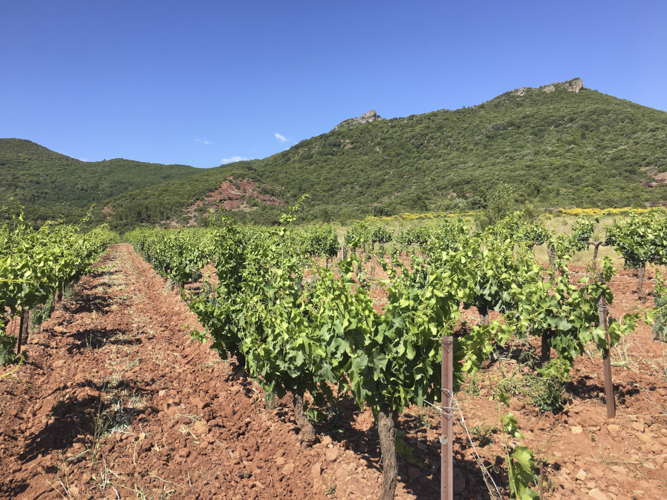
We call them Les Terres Rouges, the Red Lands. It is a deceptive soil as it looks soft and sandy from afar but is actually compact and almost as hard as rocks. And here in the dry, dusty Ruffes, it is perfect for developing the tannins of our red grapes.” Their signature red blend of Syrah, Grenache, Carignan, Mourvèdre and Cinsault is an outstanding elegant wine, fruity yet potent. Then, as he sips the exceptional – and eminently drinkable – La Villa rosé, Antonio enthuses that “this is a genuine Languedoc wine whose taste stays in your mouth afterwards, a wine by Gérard Bertrand marked by late maturation, intensity, a wine of the sun and summer heat.”
Where to eat
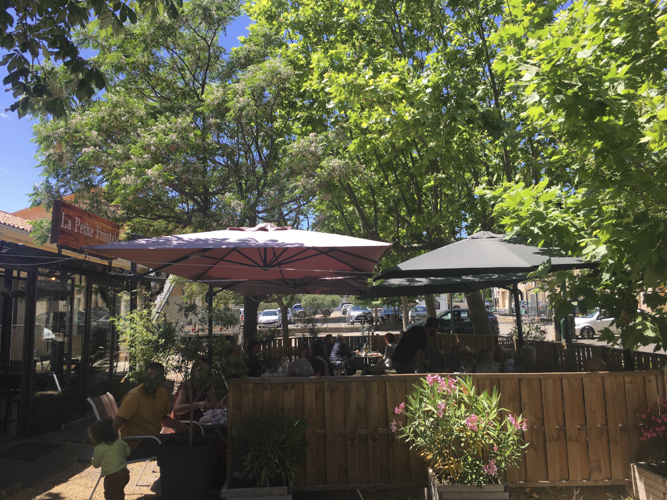
This old-fashioned village bistrot with a cool shady terrace beneath towering linden trees actually offers a cuisine with a very modern take on traditional dishes like tempura-fried artichokes with confit pigs trotter.. Note that guests have to order the fixed gastronomic menu and turn up on time otherwise they miss the first dishes.
Narbonne’s historic 19th century covered market is foodie paradise; wine bars, bistrots and tapas counters, fishmongers where you can feast off freshly-shucked oysters and shrimps, butchers who also grill giant entrecôte steaks and spicy merguez sausages.
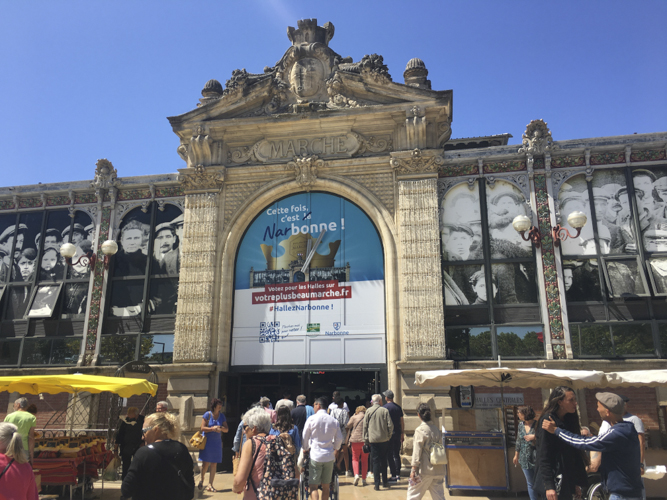
Peyriac-de-Mer is an idyllic fishing village looking out on a tranquil lake. At O Vieux Tonneaux diners sit around cheery red-checked tablecloths awaiting generous dishes prepared by chef-owner Christelle Sarraud, ranging from bourride d’anguilles, using eels fished from the lake, to a gargantuan cassoulet, with duck confit, sausage and white beans, and thick chunks of cuttlefish and tasty chorizo.
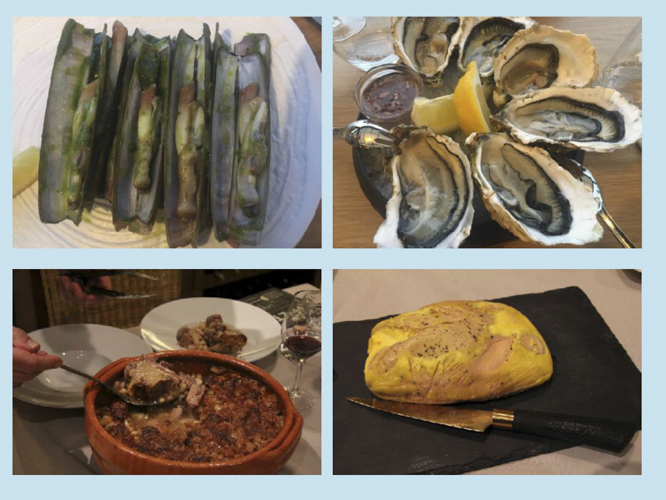
What to do
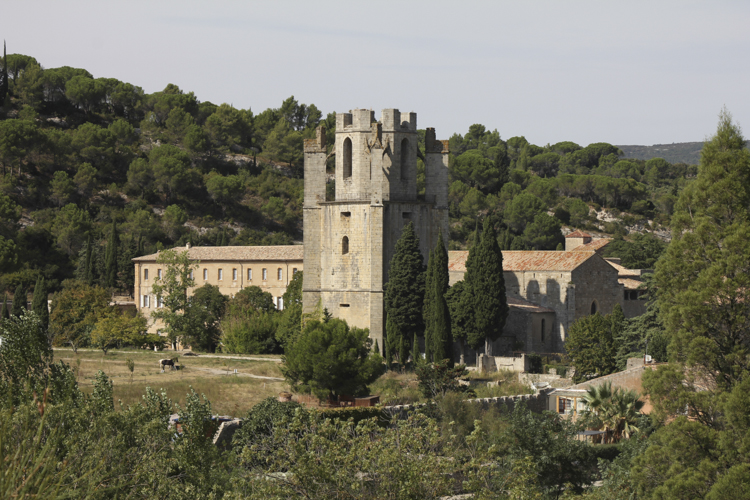
Abbaye Saine-Marie de Lagrasse
Halfway between Carcassonne and the Mediterranean, the isolated hamlet of Lagrasse, one of France’s renowned ‘Plus Beaux Villages’ is dominated by its eponymous abbey. The village is surprisingly lively with Le Bastion, an avant-garde gourmet restaurant, a medieval wooden market, artisan boutiques and a literary cafe, while the 7th century Benedictine Abbey is an oasis of peace and meditation.
This wonderfully-preserved fortress citadel is one of France’s most impressive monuments with a stunning Roman basilica and medieval cathedral. The walled city dominating the surrounding countryside, is surrounded by vineyards and recognised as an Unesco World Heritage Site.
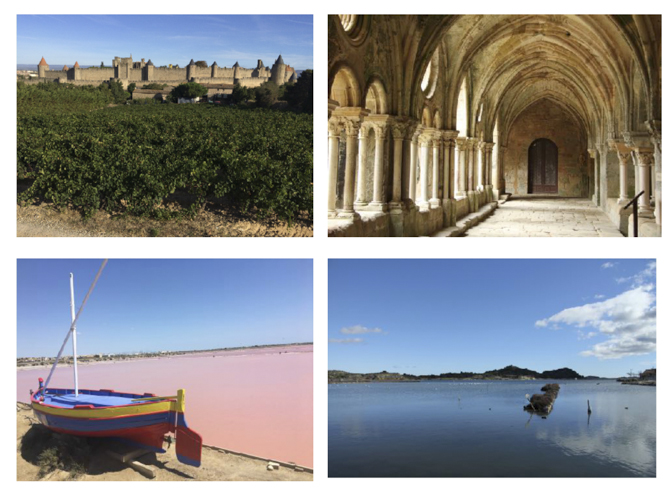
Salt has been harvested here for over 2,000 years and a visit to the traditional salt flats and wetlands is always memorable as the water changes colour from pink to blue, while the heaped mountains of salt resemble an Alpine landscape. Try sea bass baked in salt on the water’s edge at the restaurant La Cambuse du Saunier

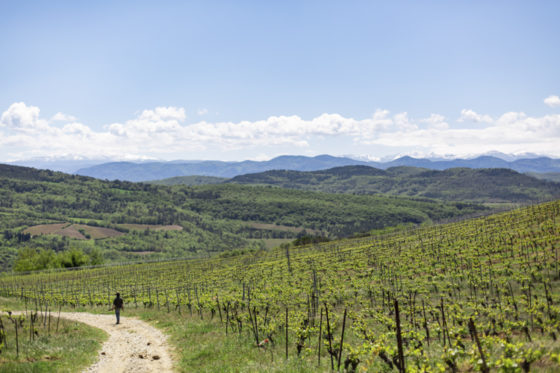
Recent Comments